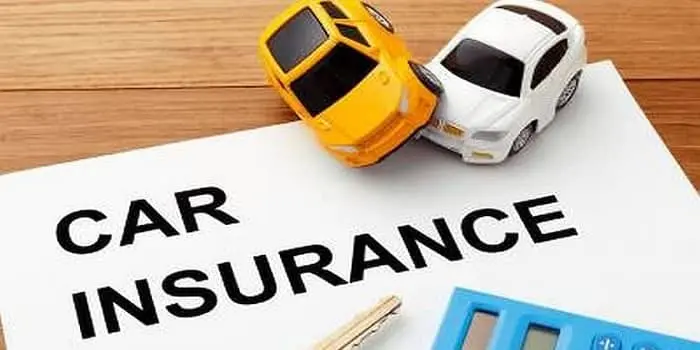Introduction
Car insurance premiums can be a substantial expense for many households, sometimes straining monthly budgets or forcing drivers to reconsider how much coverage they can afford. However, it’s important to remember that you don’t have to sacrifice protection for savings. You can enjoy reliable coverage with the right strategies while significantly reducing costs. Shopping for the most competitive rates is one of the best ways to ensure you’re not overpaying. Leveraging comparison tools and resources, like an AAA insurance quote, provides a quick and transparent way to review your options, finding lower rates and policies that genuinely suit your specific needs. By being proactive rather than passive, you’ll be more likely to drive down costs and keep your peace of mind on the road.
Knowing exactly how to lower your insurance bill—without leaving yourself financially vulnerable after a claim—is critical. Minor strategic adjustments can add up to impressive savings over time. The tips and tactics in this guide are designed to help you identify easy changes, negotiate more confidently with insurers, and optimize every aspect of your coverage. Whether you’re a new driver, a family with multiple vehicles, or someone preparing to buy a new car, the advice here will help you maximize your car insurance budget and avoid paying more than you need.
Shop Around for the Best Rates
Insurance rates can vary dramatically from one company to another, even for drivers with nearly identical profiles. Different insurers use unique formulas and risk models when determining your premiums, so the disparity in pricing can be surprising. That’s why it’s a mistake to automatically renew the same policy year after year without comparison shopping. Spend some time reviewing offers from several companies, seeking customized quotes through online platforms or with the help of an insurance broker. Utilizing services or other comparison tools can give you a detailed side-by-side analysis of competing plans. The savings can be substantial simply by switching providers or renegotiating with your existing insurer. It’s also important to check rates after major life changes—such as moving, getting married, or adding drivers to your household—to ensure your coverage and costs still align with your lifestyle.
Increase Your Deductible
One of the most effective ways to cut your insurance costs is by opting for. You pay the deductible out of pocket before your insurance kicks in after an accident or other claim. By increasing this amount, insurance companies often reward you with a significantly lower premium. For example, moving from a $500 to a $1,000 deductible might shave as much as 20% off your annual bill. However, one must honestly assess the financial situation before making this change. Ensure you have adequate savings set aside to cover the deductible if needed. This proactive planning allows you to benefit from reduced premiums without setting yourself up for a crisis should an accident occur. Ultimately, it’s about finding a comfortable balance: a deductible high enough to give you lower rates but still manageable in an emergency.
Bundle Insurance Policies
Many insurance providers offer significant discounts to customers who combine multiple insurance products under one roof. Bundling, a multi-policy discount, often applies when you have auto and homeowners (or renters) insurance with the same insurer. Depending on your insurer and policy types, these discounts can range from 5% to 25%. Beyond the savings, bundling can reduce paperwork and simplify life—rather than juggling separate bills and point-of-contact agents, most administrative details are integrated into a single relationship. Always check if your current carriers offer bundling, and don’t hesitate to compare bundled quotes across different insurers. Sometimes, switching everything to one insurer—for both savings and convenience—makes financial sense. Be sure to ask about specialty discounts or package deals unique to your provider, as these can further enhance your overall benefits.
Maintain a Good Credit Score
Your credit score doesn’t just affect loan interest rates—it has a noticeable impact on your car insurance premium. Most insurers use your credit rating as a risk assessment tool, assuming that those demonstrating financial responsibility will likely be safer, lower-risk drivers. If you have a higher credit score, you’ll usually be quoted a better rate than someone with poor credit. To keep your credit, make a point of producing bills on time, reducing outstanding balances, and regularly scrutinizing your credit reports for errors. Raising your credit score, even by a modest amount, can yield impressive savings over time. Additionally, be prepared to discuss your improved credit with your insurer and request a reevaluation of your rates if your score has increased since your last policy renewal.
Take Advantage of Discounts
The auto insurance industry is competitive, leading many companies to offer various discounts as incentives. These can be based on your driving behavior, education, occupation, or affiliations with specific organizations. Some of the most common discounts include:
- Good Driver Discount:Rewarding those with clean records free of accidents or traffic violations over a specific period.
- Good Student Discount:High school or college students maintaining a “B” average or better are often eligible for reduced premiums.
- Low Mileage Discount:If you drive significantly less than the average distance each year, insurers may consider you a lower risk and offer a discount.
- Defensive Driving Course Discount:Certified courses in safe driving demonstrate a commitment to safe habits and can provide a moderate, regular price reduction.
Insurers add or update opportunities regularly. It’s wise to review what you qualify for each time you renew or update your policy. Life milestones, like getting married, moving to a new home, or joining a professional association, offer discount categories. Stay proactive by asking about the latest offers and ensuring you receive the full spectrum of savings available.
Consider Usage-Based Insurance
One of the most innovative trends in car insurance is usage-based insurance (UBI), which customizes your premium according to your personal driving habits. These programs utilize telematics—through plug-in devices or mobile apps—to monitor how far, how often, and how safely you drive. Policyholders with careful driving habits, such as avoiding hard braking, speeding, or late-night driving, may see substantial reductions in their rates. Some users report savings of up to 40% using these programs. UBI is especially attractive for retirees, commuters who use public transit, or anyone whose driving profile is low-risk and low-mileage. However, if you often drive at risky times or have an aggressive driving style, UBI could potentially increase your premium with certain companies. Consider this approach if you’re confident in your safe driving behaviors and want to directly influence your rates through your habits. For further details and a deeper understanding of usage-based insurance programs, consult the comprehensive resource at the National Association of Insurance Commissioners.
Choose Your Vehicle Wisely
The kind of car you drive is one of the most significant factors influencing your insurance premium. Vehicles with high safety ratings, built-in advanced tech (like collision avoidance and lane-keeping support), and a lower theft risk are typically less expensive to insure. Common sense might say that smaller, less costly vehicles are always cheaper, but insurers also assess the cost to repair or replace them and their claims data for each make and model. For family drivers, vehicles like the Subaru Outback, Honda Odyssey, or similar models known for safety and reliability often offer meaningful insurance savings. Conversely, owning a high-end luxury car, performance vehicle, or a vehicle with expensive parts likely means a much higher insurance bill. Whether you’re shopping for new or used, always consider the long-term insurance implications of your car choices. You’ll find valuable manufacturer safety information and vehicle insurance cost projections at the Insurance Institute for Highway Safety.
Limit Unnecessary Coverage
If you’re driving an older car with a depreciated value, reconsider whether you must continue paying for comprehensive or collision coverage. As a general rule, if these extras cost more than 10% of your camaintaining thems current market value, it may n sensible to maintain them. Review your policy each renewal period in light of your car’s aging and declining value. Cutting unnecessary coverage doesn’t mean leaving yourself exposed—it means streamlining your protection to what’s truly needed, ensuring you’re only paying for relevant, effective coverage. This adjustment frees up funds in your budget, allowing you to reallocate money toward more urgent financial priorities or better coverage where it matters most.
By implementing these strategies, you can effectively lower your car insurance costs without ever compromising the safety or quality of your protection. Monitor your policy every year, look for fresh discounts as life changes, and use reputable comparison sites to stay ahead. Being proactive, informed, and willing to adapt ensures you’ll protect both your wallet and your peace of mind, knowing you’re not overspending to stay safe on the road.













